Abstract
It is suggested that molar streams of behavior are constructed of various arrangements of three elementary constituents (elicited, evoked, and emitted response classes). An eight-cell taxonomy is elaborated as a framework for analyzing and synthesizing complex behavioral repertoires based on these functional units. It is proposed that the local force binding functional units into a smoothly articulated kinetic sequence arises from temporally arranged relative response probability relationships. Behavioral integration is thought to reflect the joint influence of the organism's hierarchy of relative response probabilities, fluctuating biological states, and the arrangement of environmental and behavioral events in time.
Keywords: behavioral units, units of analysis, response class, organization of behavior, behavioral taxonomy, relative response probability
Full text
PDF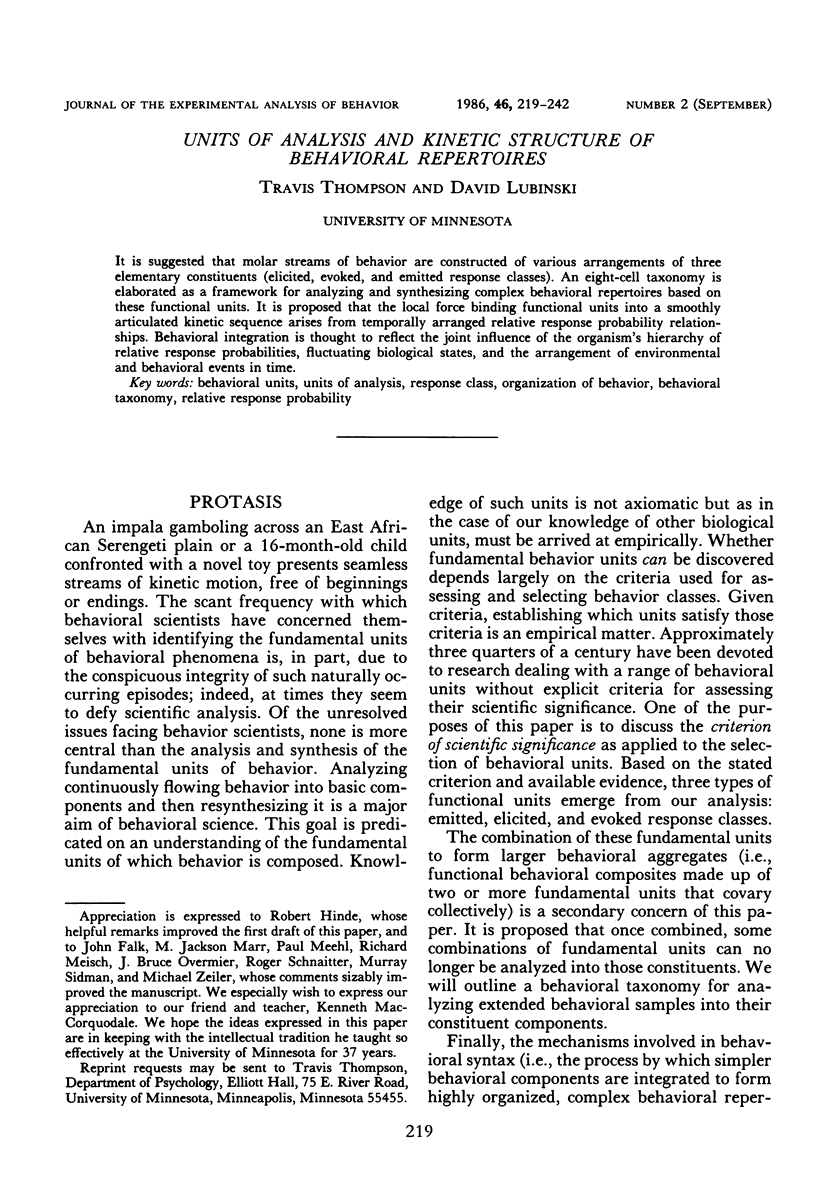

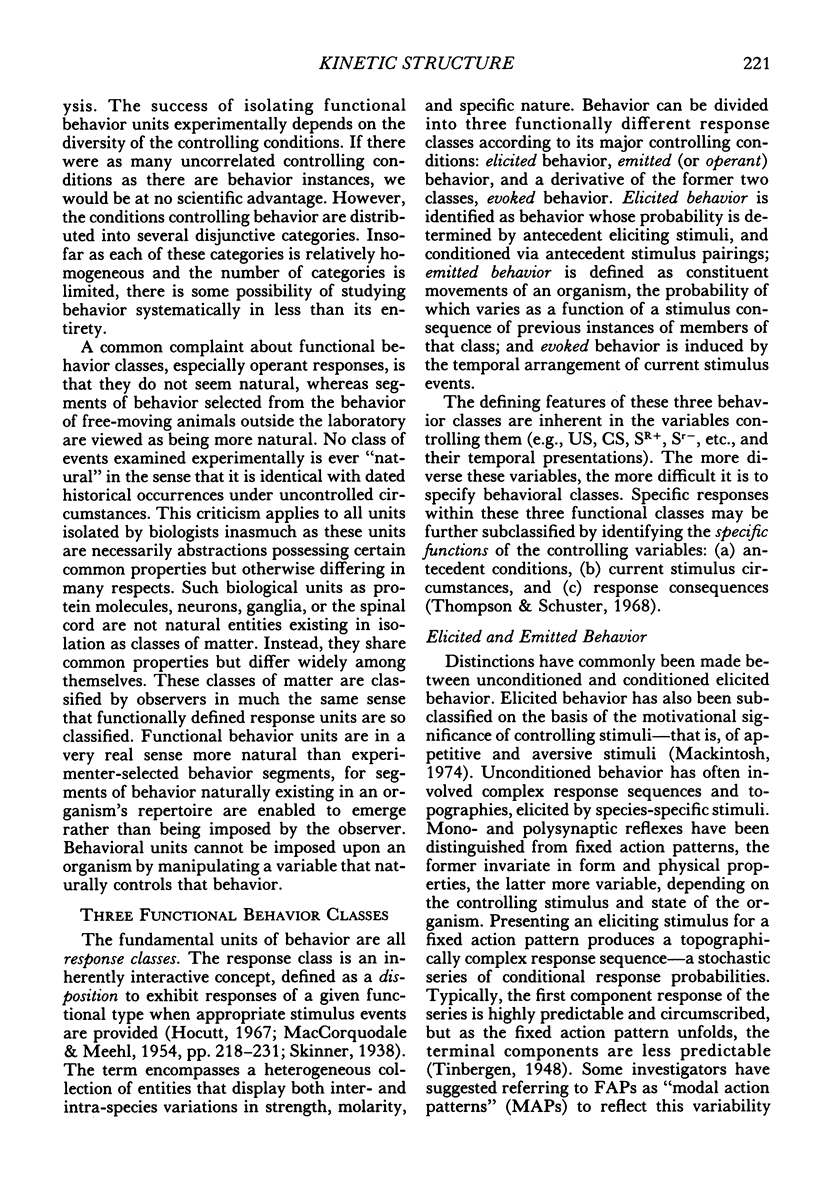
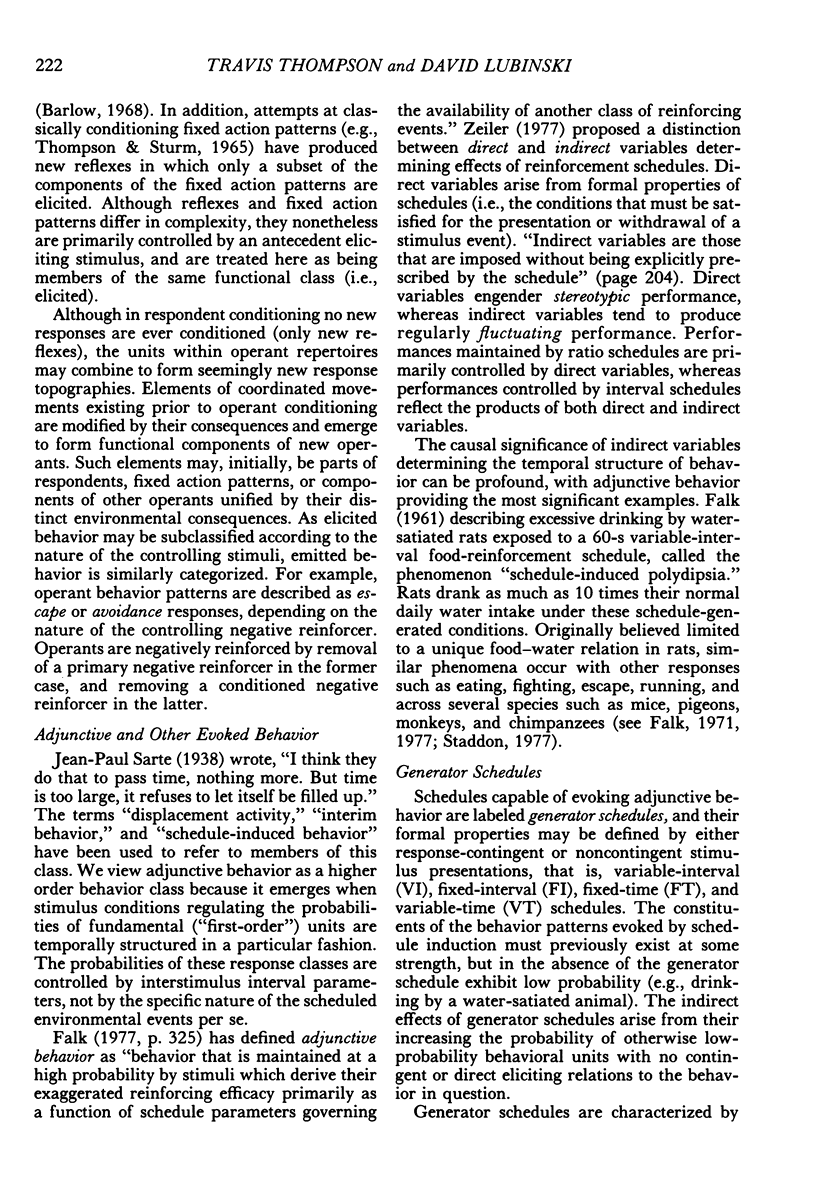
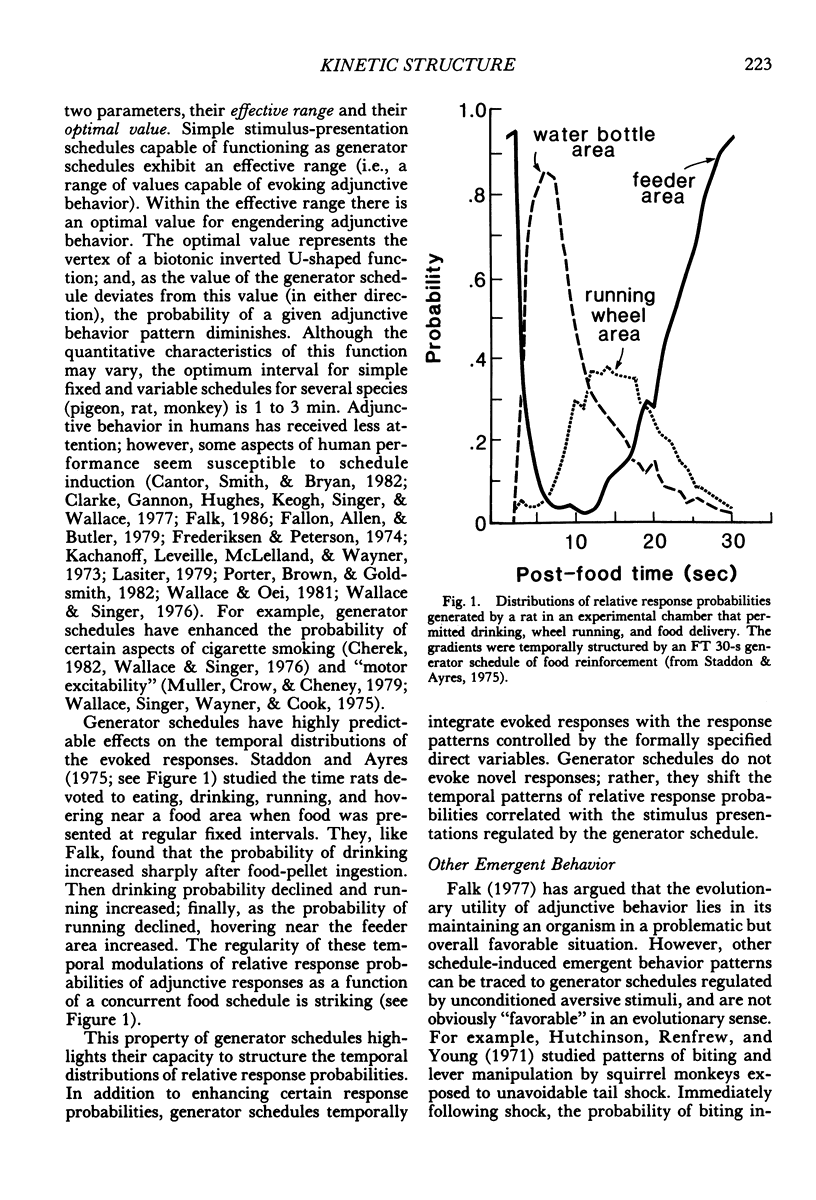
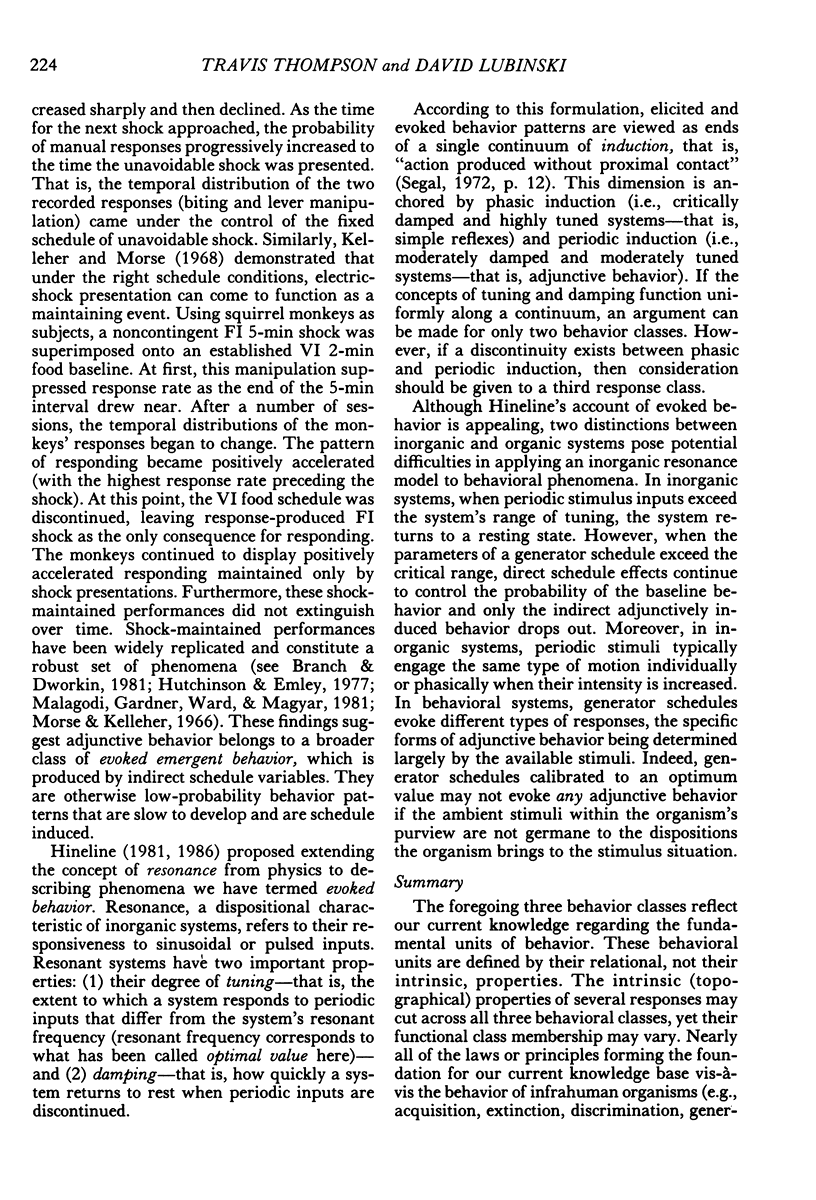

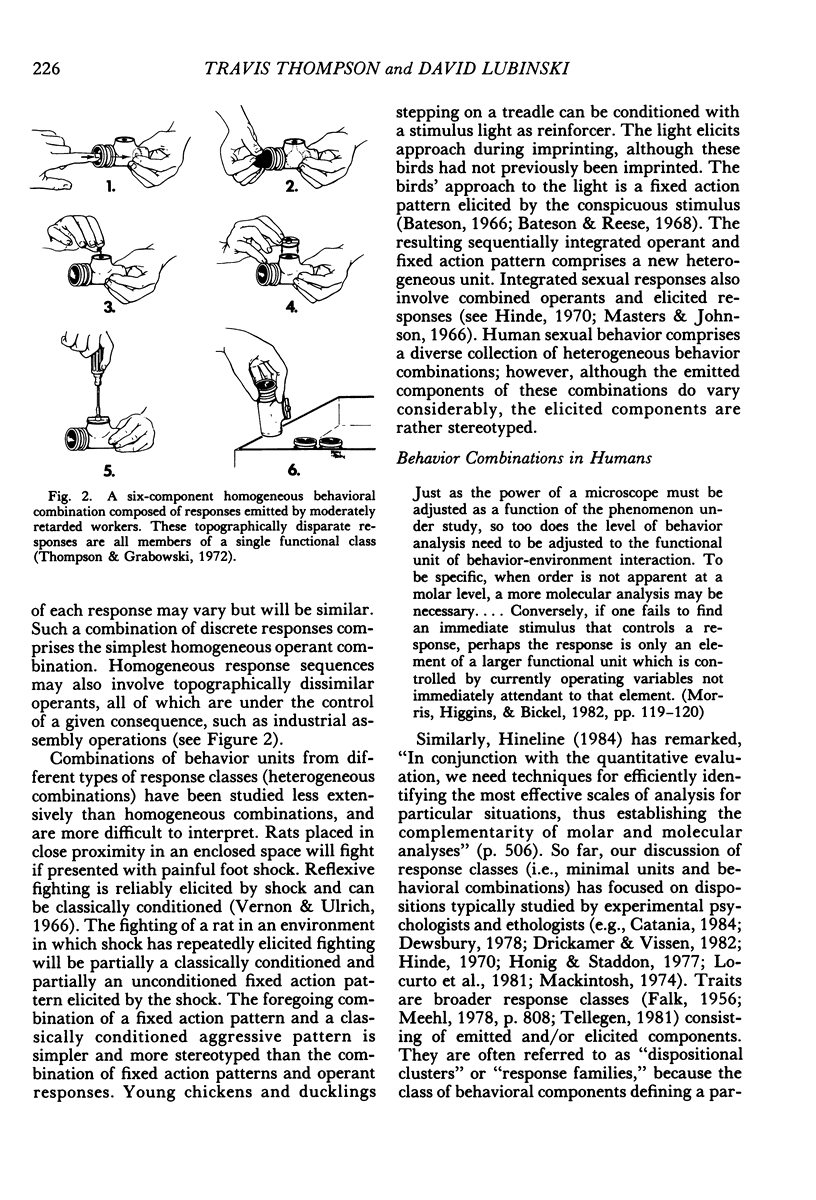

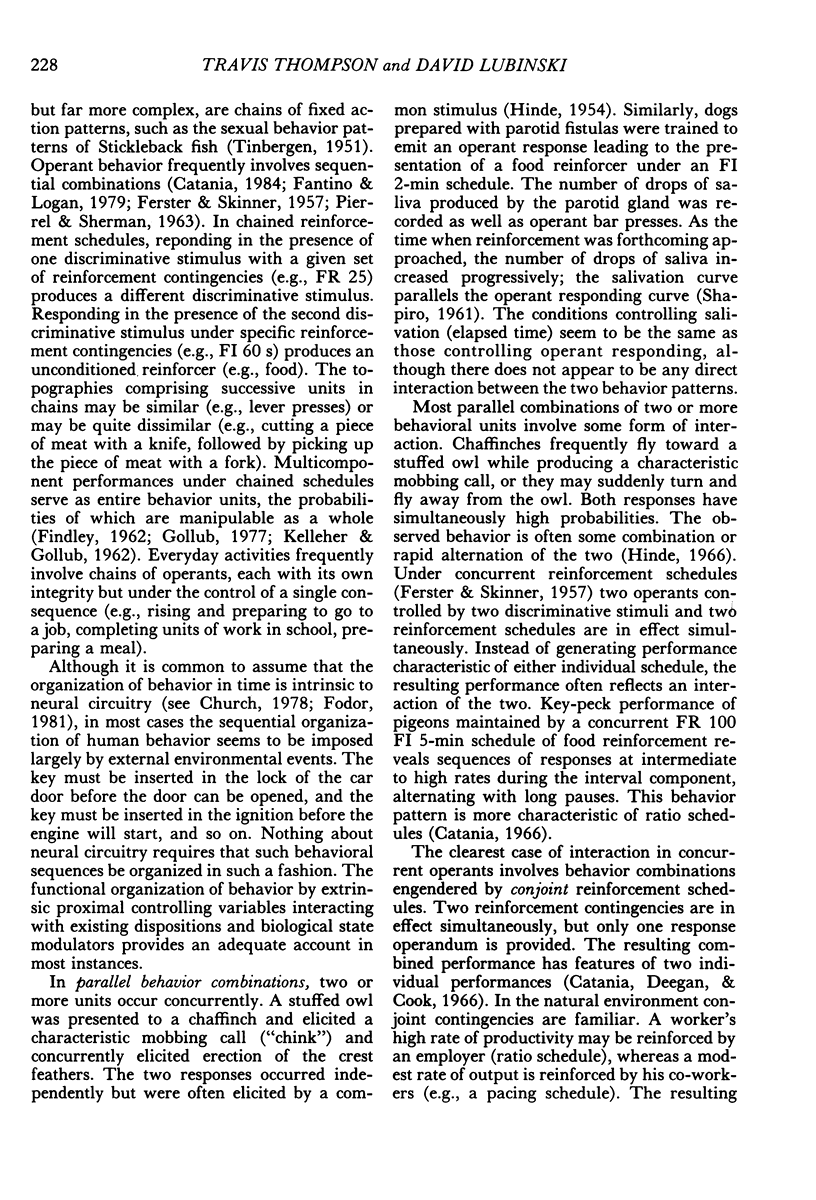
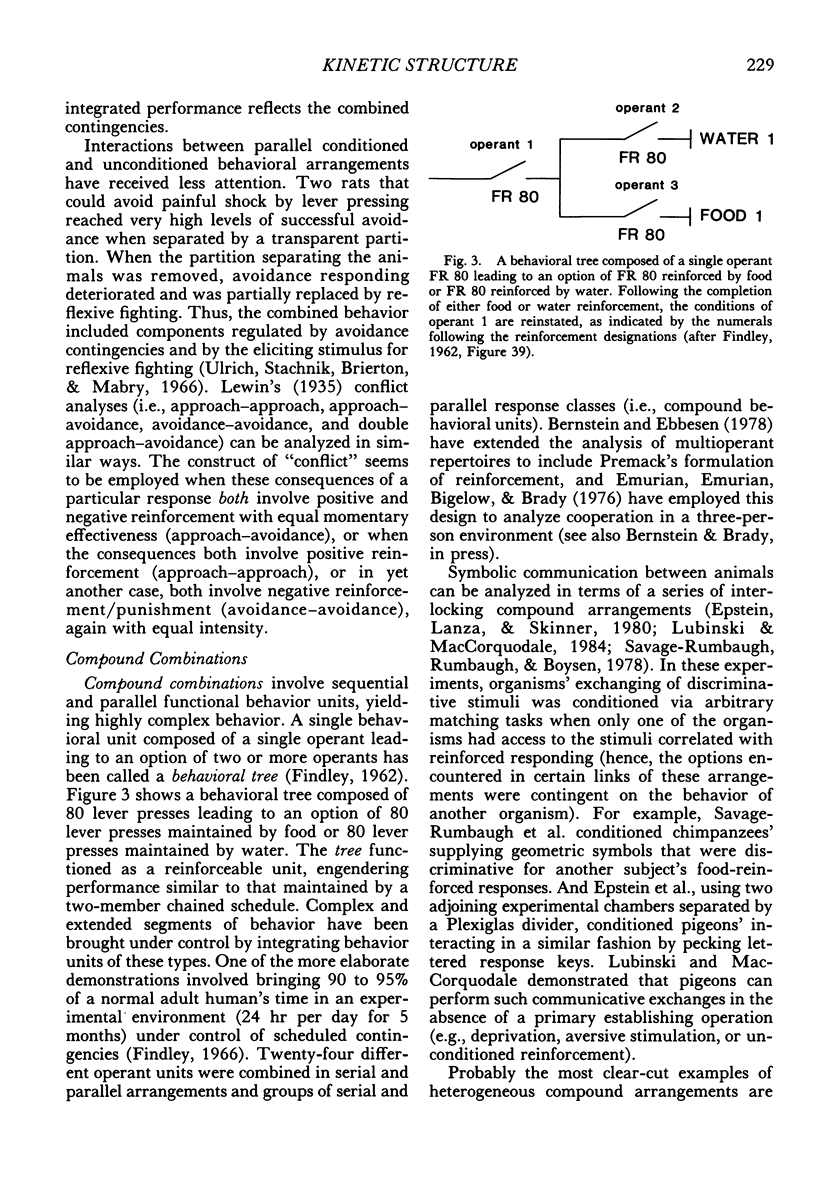
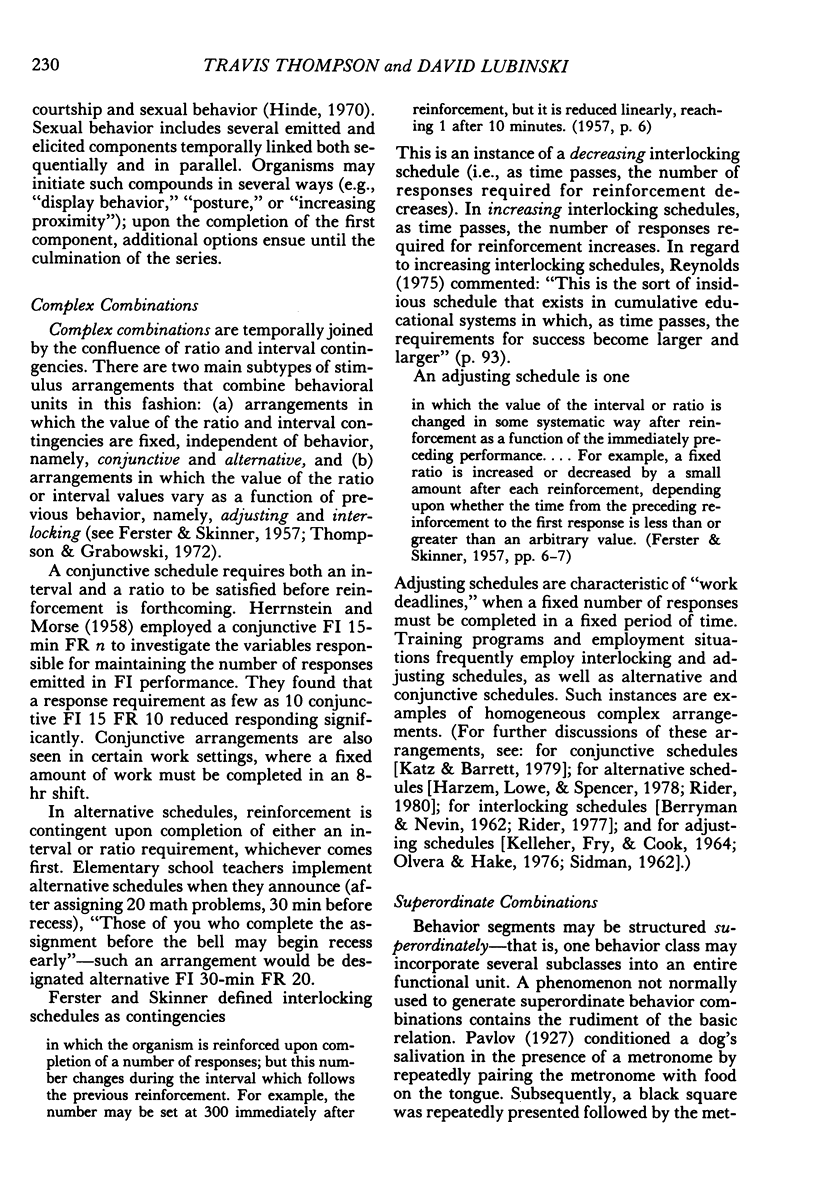
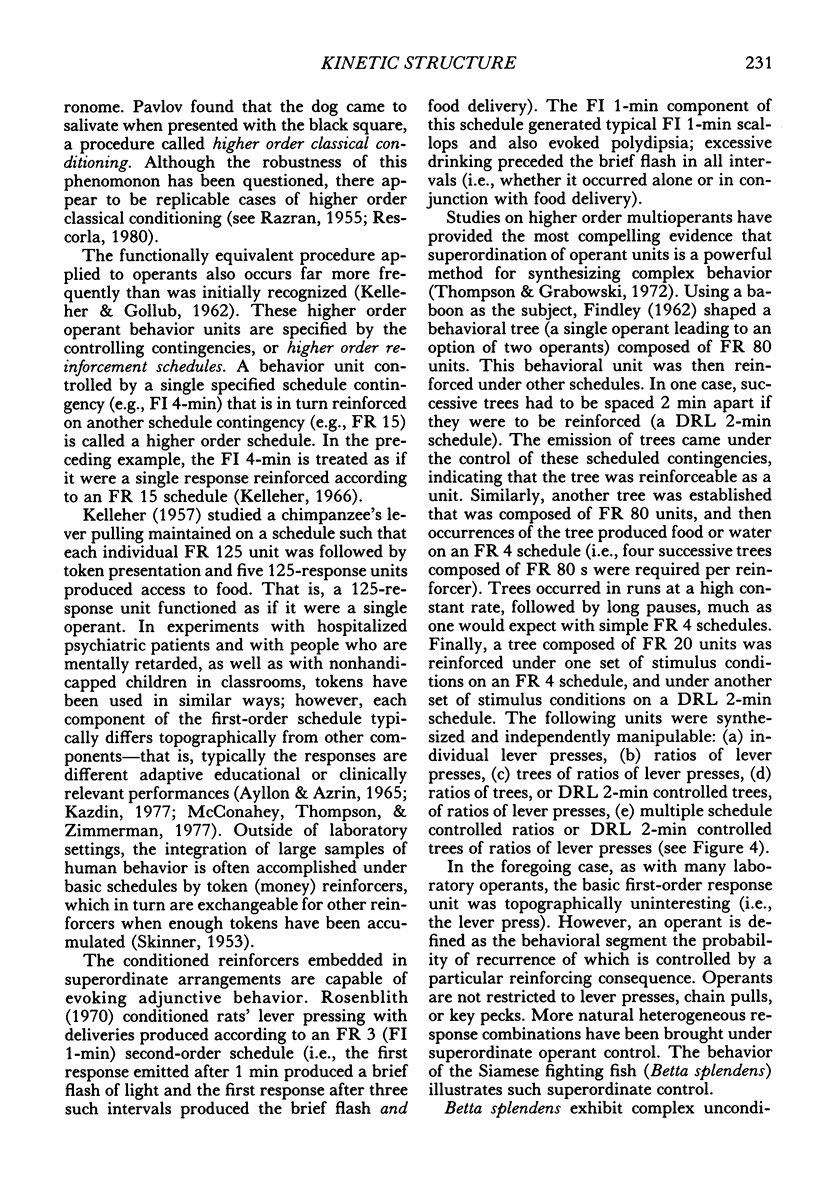

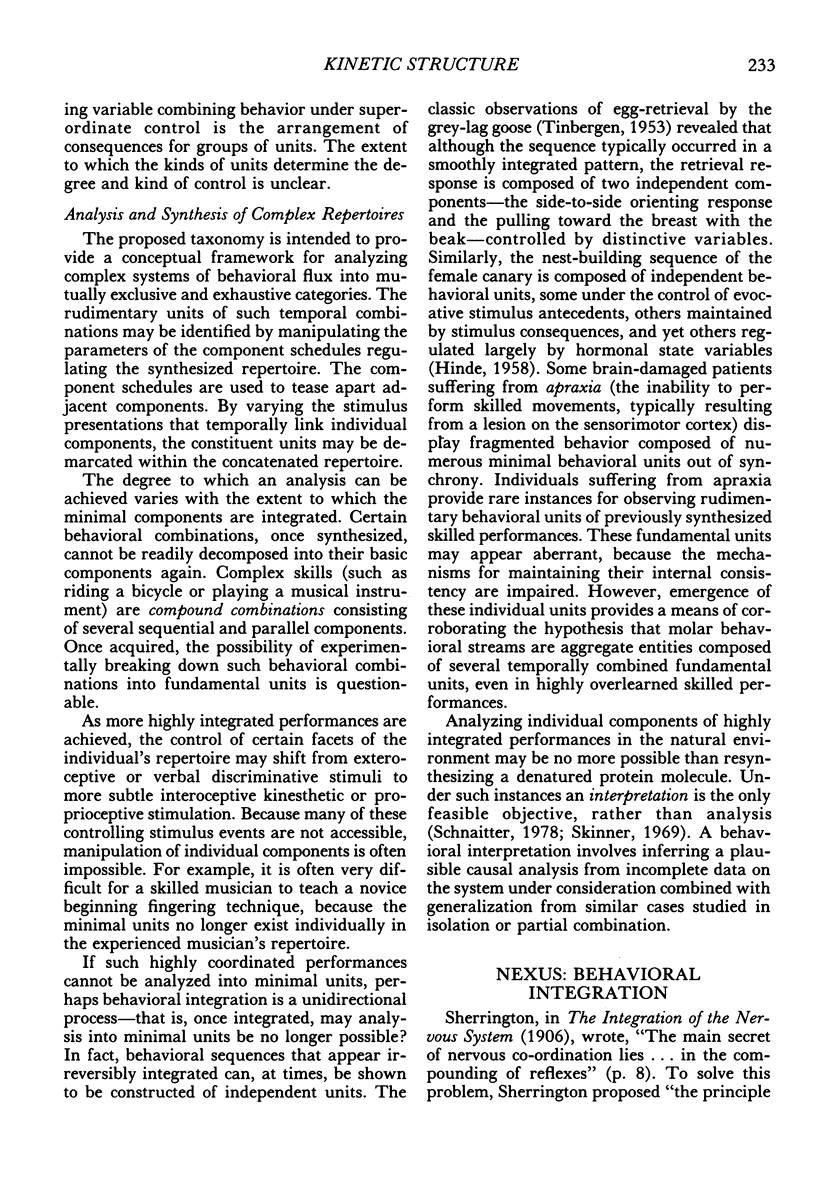
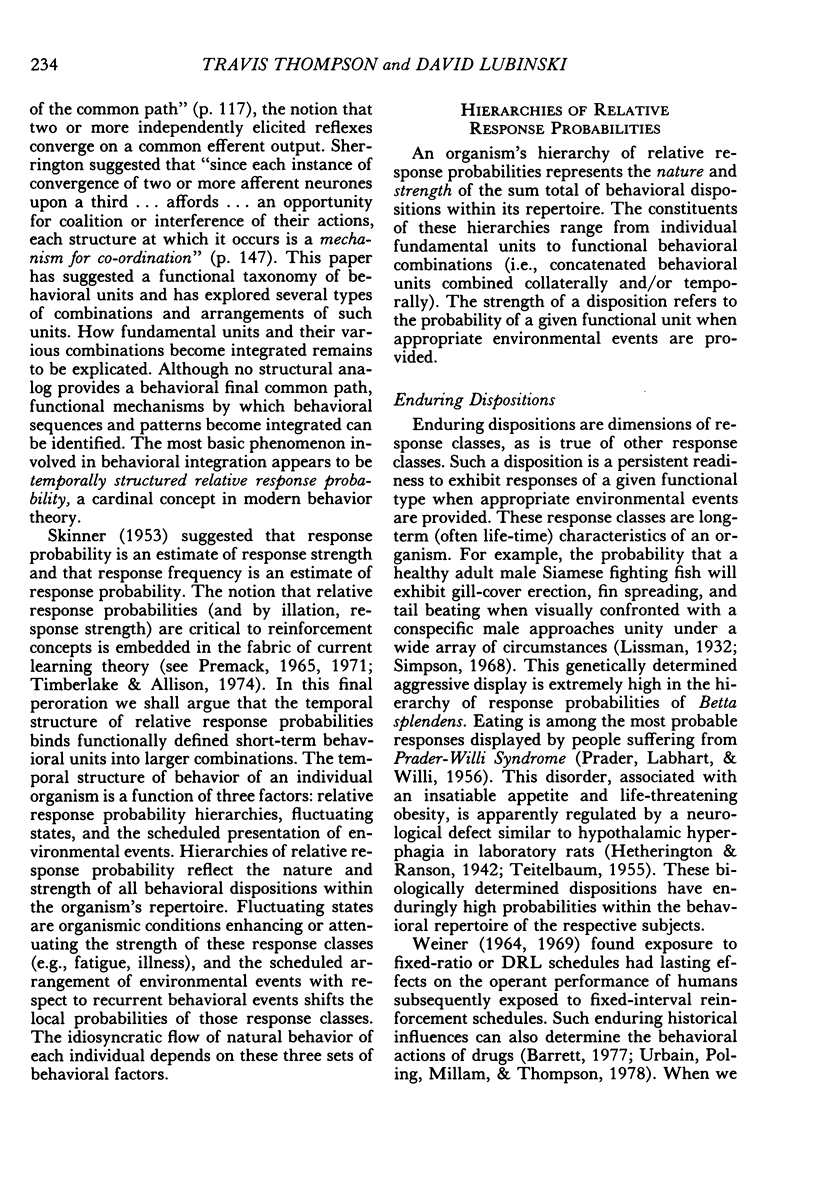



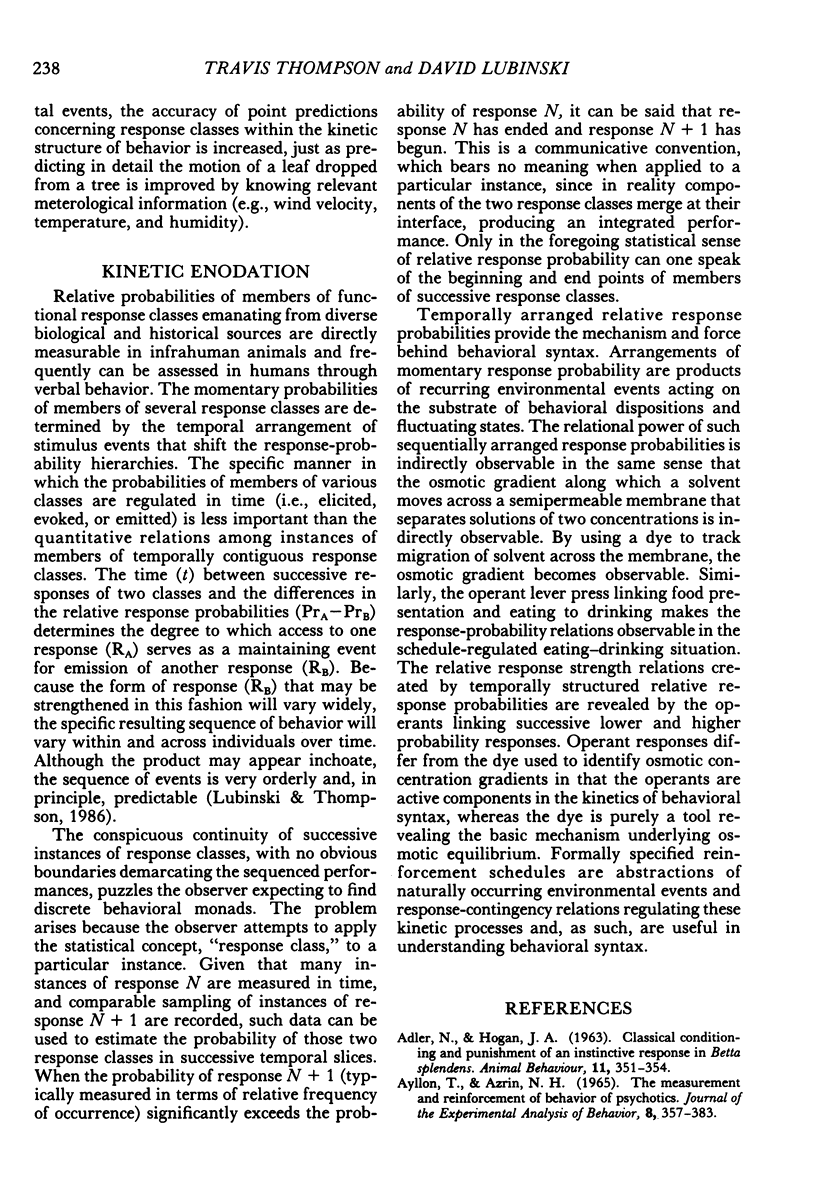
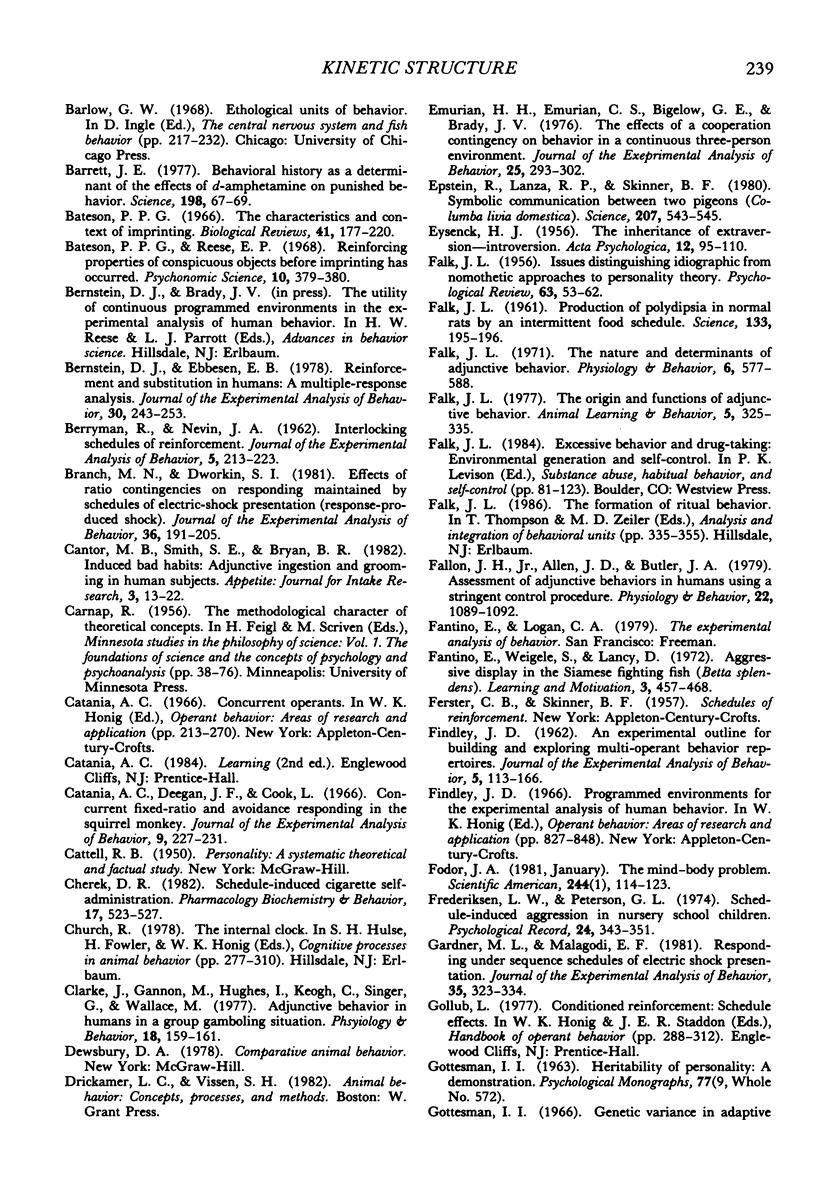
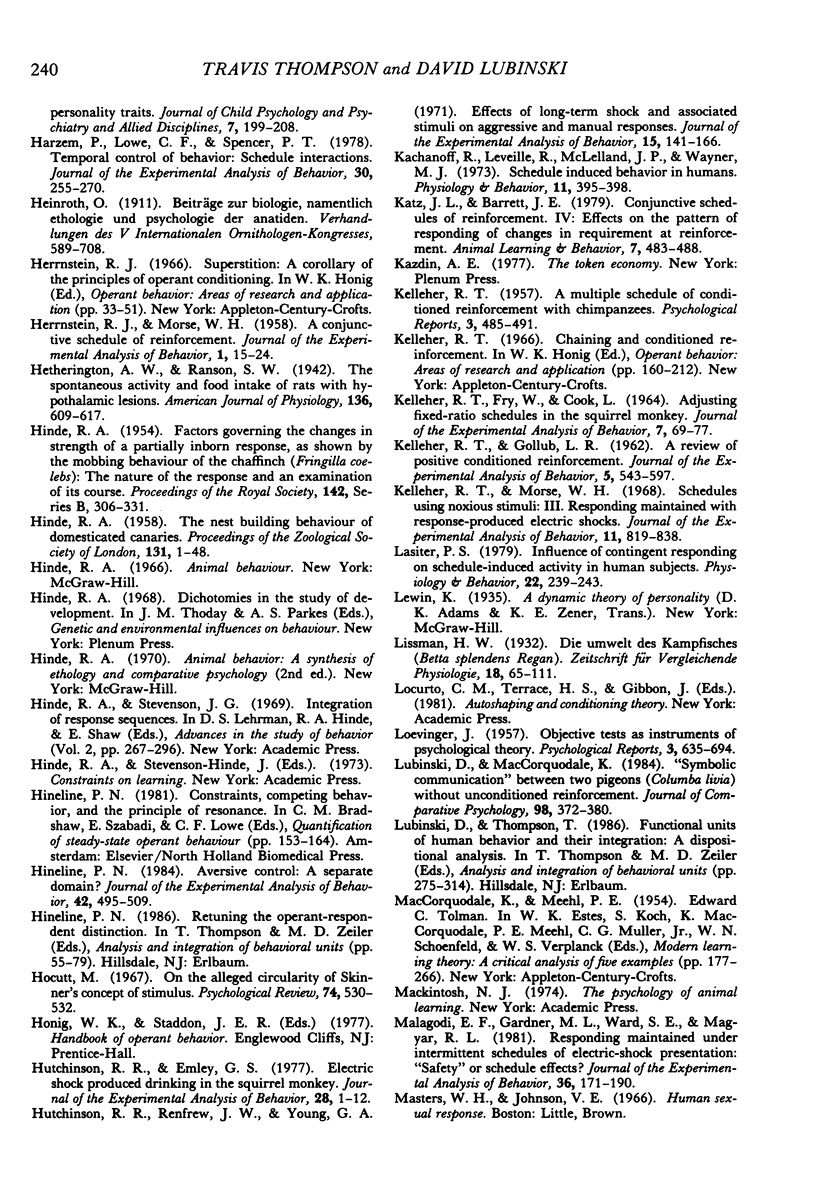

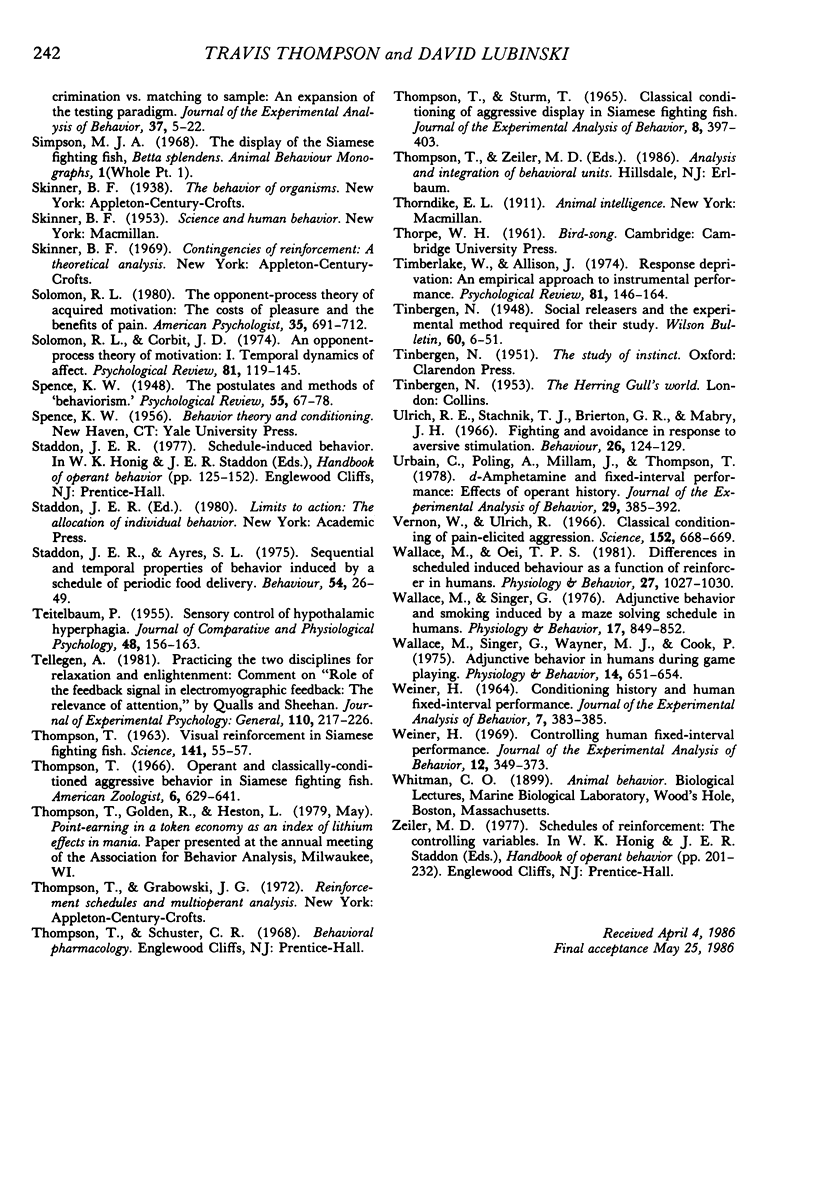
Selected References
These references are in PubMed. This may not be the complete list of references from this article.
- Ayllon T., Azrin N. H. The measurement and reinforcement of behavior of psychotics. J Exp Anal Behav. 1965 Nov;8(6):357–383. doi: 10.1901/jeab.1965.8-357. [DOI] [PMC free article] [PubMed] [Google Scholar]
- BERRYMAN R., NEVIN J. A. Interlocking schedules of reinforcement. J Exp Anal Behav. 1962 Apr;5:213–223. doi: 10.1901/jeab.1962.5-213. [DOI] [PMC free article] [PubMed] [Google Scholar]
- Barrett J. E. Behavioral history as a determinant of the effects of d-amphetamine on punished behavior. Science. 1977 Oct 7;198(4312):67–69. doi: 10.1126/science.408925. [DOI] [PubMed] [Google Scholar]
- Bateson P. P. The characteristics and context of imprinting. Biol Rev Camb Philos Soc. 1966 May;41(2):177–211. doi: 10.1111/j.1469-185x.1966.tb01489.x. [DOI] [PubMed] [Google Scholar]
- Bernstein D. J., Ebbesen E. B. Reinforcement and substitution in humans: a multiple-response analysis. J Exp Anal Behav. 1978 Nov;30(3):243–253. doi: 10.1901/jeab.1978.30-243. [DOI] [PMC free article] [PubMed] [Google Scholar]
- Branch M. N., Dworkin S. I. Effects of ratio contingencies on responding maintained by schedules of electric-shock presentation (response-produced shock). J Exp Anal Behav. 1981 Sep;36(2):191–205. doi: 10.1901/jeab.1981.36-191. [DOI] [PMC free article] [PubMed] [Google Scholar]
- Catania A. C., Deegan J. F., Cook L. Concurrent fixed-ratio and avoidance responding in the squirrel monkey. J Exp Anal Behav. 1966 May;9(3):227–231. doi: 10.1901/jeab.1966.9-227. [DOI] [PMC free article] [PubMed] [Google Scholar]
- Clarke J., Gannon M., Hughes I., Keogh C., Singer G., Wallace M. Adjunctive behavior in humans in a group gambling situation. Physiol Behav. 1977 Jan;18(1):159–161. doi: 10.1016/0031-9384(77)90110-x. [DOI] [PubMed] [Google Scholar]
- Emurian H. H., Emurian C. S., Bigelow G. E., Brady J. V. The effects of a cooperation contingency on behavior in a continuous three-person environment. J Exp Anal Behav. 1976 May;25(3):293–302. doi: 10.1901/jeab.1976.25-293. [DOI] [PMC free article] [PubMed] [Google Scholar]
- Epstein R., Lanza R. P., Skinner B. F. Symbolic Communication Between Two Pigeons, (Columba livia domestica). Science. 1980 Feb 1;207(4430):543–545. doi: 10.1126/science.207.4430.543. [DOI] [PubMed] [Google Scholar]
- FALK J. L. Issues distinguishing idiographic from nomothetic approaches to personality theory. Psychol Rev. 1956 Jan;63(1):53–62. doi: 10.1037/h0047811. [DOI] [PubMed] [Google Scholar]
- FALK J. L. Production of polydipsia in normal rats by an intermittent food schedule. Science. 1961 Jan 20;133(3447):195–196. doi: 10.1126/science.133.3447.195. [DOI] [PubMed] [Google Scholar]
- FINDLEY J. D. An experimental outline for building and exploring multi-operant behavior repertoires. J Exp Anal Behav. 1962 Jan;5(Suppl):113–166. doi: 10.1901/jeab.1962.5-s113. [DOI] [PMC free article] [PubMed] [Google Scholar]
- Falk J. L. The nature and determinants of adjunctive behavior. Physiol Behav. 1971 May;6(5):577–588. doi: 10.1016/0031-9384(71)90209-5. [DOI] [PubMed] [Google Scholar]
- Fallon J. H., Jr, Allen J. D., Butler J. A. Assessment of adjunctive behaviors in humans using a stringent control procedure. Physiol Behav. 1979 Jun;22(6):1089–1092. doi: 10.1016/0031-9384(79)90261-0. [DOI] [PubMed] [Google Scholar]
- Fodor J. A. The mind-body problem. Sci Am. 1981 Jan;244(1):114-20, 122-3. doi: 10.1038/scientificamerican0181-114. [DOI] [PubMed] [Google Scholar]
- Gardner M. L., Malagodi E. F. Responding under sequence schedules of electric shock presentation. J Exp Anal Behav. 1981 May;35(3):323–334. doi: 10.1901/jeab.1981.35-323. [DOI] [PMC free article] [PubMed] [Google Scholar]
- HERRNSTEIN R. J., MORSE W. H. A conjunctive schedule of reinforcement. J Exp Anal Behav. 1958 Jan;1:15–24. doi: 10.1901/jeab.1958.1-15. [DOI] [PMC free article] [PubMed] [Google Scholar]
- HINDE R. A. Factors governing the changes in strength of a partially inborn response, as shown by the mobbing behaviour of the chaffinch (Fringilla coelebs). I. The nature of the response, and an examination of its course. Proc R Soc Lond B Biol Sci. 1954 May 27;142(908):306–331. doi: 10.1098/rspb.1954.0028. [DOI] [PubMed] [Google Scholar]
- Harzem P., Lowe C. F., Spencer P. T. Temporal control of behavior: schedule interactions. J Exp Anal Behav. 1978 Nov;30(3):255–270. doi: 10.1901/jeab.1978.30-255. [DOI] [PMC free article] [PubMed] [Google Scholar]
- Hineline P. N. Aversive control: A separate domain? J Exp Anal Behav. 1984 Nov;42(3):495–509. doi: 10.1901/jeab.1984.42-495. [DOI] [PMC free article] [PubMed] [Google Scholar]
- Hocutt M. On the alleged circularity of Skinner's concept of stimulus. Psychol Rev. 1967 Nov;74(6):530–532. doi: 10.1037/h0025100. [DOI] [PubMed] [Google Scholar]
- Hutchinson R. R., Emley G. S. Electric shock produced drinking in the squirrel monkey. J Exp Anal Behav. 1977 Jul;28(1):1–12. doi: 10.1901/jeab.1977.28-1. [DOI] [PMC free article] [PubMed] [Google Scholar]
- Hutchinson R. R., Renfrew J. W., Young G. A. Effects of long-term shock and associated stimuli on aggressive and manual responses. J Exp Anal Behav. 1971 Mar;15(2):141–166. doi: 10.1901/jeab.1971.15-141. [DOI] [PMC free article] [PubMed] [Google Scholar]
- KELLEHER R. T., FRY W., COOK L. ADJUSTING FIXED-RATIO SCHEDULES IN THE SQUIRREL MONKEY. J Exp Anal Behav. 1964 Jan;7:69–77. doi: 10.1901/jeab.1964.7-69. [DOI] [PMC free article] [PubMed] [Google Scholar]
- KELLEHER R. T., GOLLUB L. R. A review of positive conditioned reinforcement. J Exp Anal Behav. 1962 Oct;5:543–597. doi: 10.1901/jeab.1962.5-s543. [DOI] [PMC free article] [PubMed] [Google Scholar]
- Kachanoff R., Leveille R., McLelland J. P., Wayner M. J. Schedule induced behavior in humans. Physiol Behav. 1973 Sep;11(3):395–398. doi: 10.1016/0031-9384(73)90018-8. [DOI] [PubMed] [Google Scholar]
- Kelleher R. T., Morse W. H. Schedules using noxious stimuli. III. Responding maintained with response-produced electric shocks. J Exp Anal Behav. 1968 Nov;11(6):819–838. doi: 10.1901/jeab.1968.11-819. [DOI] [PMC free article] [PubMed] [Google Scholar]
- Lasiter P. S. Influence of contingent responding on schedule-induced activity in human subjects. Physiol Behav. 1979 Feb;22(2):239–243. doi: 10.1016/0031-9384(79)90082-9. [DOI] [PubMed] [Google Scholar]
- Malagodi E. F., Gardner M. L., Ward S. E., Magyar R. L. Responding maintained under intermittent schedules of electric-shock presentation: "Safety" or schedule effects? J Exp Anal Behav. 1981 Sep;36(2):171–190. doi: 10.1901/jeab.1981.36-171. [DOI] [PMC free article] [PubMed] [Google Scholar]
- Morse W. H., Kelleher R. T. Schedules using noxious stimuli. I. Multiple fixed-ratio and fixed-interval termination of schedule complexes. J Exp Anal Behav. 1966 May;9(3):267–290. doi: 10.1901/jeab.1966.9-267. [DOI] [PMC free article] [PubMed] [Google Scholar]
- Muller P. G., Crow R. E., Cheney C. D. Schedule-induced locomotor activity in humans. J Exp Anal Behav. 1979 Jan;31(1):83–90. doi: 10.1901/jeab.1979.31-83. [DOI] [PMC free article] [PubMed] [Google Scholar]
- Olvera D. R., Hake D. F. Producing a change from competition to sharing: effects of large and adjusting response requirements. J Exp Anal Behav. 1976 Nov;26(3):321–333. doi: 10.1901/jeab.1976.26-321. [DOI] [PMC free article] [PubMed] [Google Scholar]
- Porter J. H., Brown R. T., Goldsmith P. A. Adjunctive behavior in children on fixed interval food reinforcement schedules. Physiol Behav. 1982 Apr;28(4):609–612. doi: 10.1016/0031-9384(82)90038-5. [DOI] [PubMed] [Google Scholar]
- RAZRAN G. A note on second-order conditioning and secondary reinforcement. Psychol Rev. 1955 Sep;62(5):327–332. doi: 10.1037/h0047135. [DOI] [PubMed] [Google Scholar]
- Rescorla R. A., Solomon R. L. Two-process learning theory: Relationships between Pavlovian conditioning and instrumental learning. Psychol Rev. 1967 May;74(3):151–182. doi: 10.1037/h0024475. [DOI] [PubMed] [Google Scholar]
- Rider D. P. Alternative fixed-ratio fixed-interval schedules of reinforcement. J Exp Anal Behav. 1980 Mar;33(2):243–252. doi: 10.1901/jeab.1980.33-243. [DOI] [PMC free article] [PubMed] [Google Scholar]
- Rider D. P. Interlocking schedules: the relationship between response and time requirements. J Exp Anal Behav. 1977 Jul;28(1):41–46. doi: 10.1901/jeab.1977.28-41. [DOI] [PMC free article] [PubMed] [Google Scholar]
- Rosenblith J. Z. Polydipsia induced in the rat by a second-order schedule. J Exp Anal Behav. 1970 Sep;14(2):139–144. doi: 10.1901/jeab.1970.14-139. [DOI] [PMC free article] [PubMed] [Google Scholar]
- SHAPIRO M. M. Salivary conditioning in dogs during fixed-interval reinforcement contingent upon lever pressing. J Exp Anal Behav. 1961 Oct;4:361–364. doi: 10.1901/jeab.1961.4-361. [DOI] [PMC free article] [PubMed] [Google Scholar]
- SIDMAN M. An adjusting avoidance schedule. J Exp Anal Behav. 1962 Apr;5:271–277. doi: 10.1901/jeab.1962.5-271. [DOI] [PMC free article] [PubMed] [Google Scholar]
- Savage-Rumbaugh E. S., Rumbaugh D. M., Boysen S. Symbolic communication between two chimpanzees (Pan troglodytes). Science. 1978 Aug 18;201(4356):641–644. doi: 10.1126/science.675251. [DOI] [PubMed] [Google Scholar]
- Scarr S. Social introversion--extraversion as a heritable response. Child Dev. 1969 Sep;40(3):823–832. [PubMed] [Google Scholar]
- Sidman M., Rauzin R., Lazar R., Cunningham S., Tailby W., Carrigan P. A search for symmetry in the conditional discriminations of rhesus monkeys, baboons, and children. J Exp Anal Behav. 1982 Jan;37(1):23–44. doi: 10.1901/jeab.1982.37-23. [DOI] [PMC free article] [PubMed] [Google Scholar]
- Sidman M., Tailby W. Conditional discrimination vs. matching to sample: an expansion of the testing paradigm. J Exp Anal Behav. 1982 Jan;37(1):5–22. doi: 10.1901/jeab.1982.37-5. [DOI] [PMC free article] [PubMed] [Google Scholar]
- Solomon R. L., Corbit J. D. An opponent-process theory of motivation. I. Temporal dynamics of affect. Psychol Rev. 1974 Mar;81(2):119–145. doi: 10.1037/h0036128. [DOI] [PubMed] [Google Scholar]
- Solomon R. L. The opponent-process theory of acquired motivation: the costs of pleasure and the benefits of pain. Am Psychol. 1980 Aug;35(8):691–712. doi: 10.1037//0003-066x.35.8.691. [DOI] [PubMed] [Google Scholar]
- TEITELBAUM P. Sensory control of hypothalamic hyperphagia. J Comp Physiol Psychol. 1955 Jun;48(3):156–163. doi: 10.1037/h0043164. [DOI] [PubMed] [Google Scholar]
- Tellegen A. Practicing the two disciplines for relaxation and enlightenment: comment on "Role of the feedback signal in electromyograph biofeedback: the relevance of attention" by Qualls and Sheehan. J Exp Psychol Gen. 1981 Jun;110(2):217–231. [PubMed] [Google Scholar]
- Thompson T. I. Visual Reinforcement in Siamese Fighting Fish. Science. 1963 Jul 5;141(3575):55–57. doi: 10.1126/science.141.3575.55. [DOI] [PubMed] [Google Scholar]
- Thompson T. Operant and classically-conditioned aggressive behavior in Siamese fighting fish. Am Zool. 1966 Nov;6(4):629–641. doi: 10.1093/icb/6.4.629. [DOI] [PubMed] [Google Scholar]
- Thompson T., Sturm T. Classical conditioning of aggressive display in Siamese fighting fish. J Exp Anal Behav. 1965 Nov;8(6):397–403. doi: 10.1901/jeab.1965.8-397. [DOI] [PMC free article] [PubMed] [Google Scholar]
- Ulrich R. E., Stachnik T. J., Brierton G. R., Mabry J. H. Fighting and avoidance in response to aversive stimulation. Behaviour. 1966;26(1):124–129. doi: 10.1163/156853966x00056. [DOI] [PubMed] [Google Scholar]
- Urbain C., Poling A., Millam J., Thompson T. d-amphetamine and fixed-interval performance: effects of operant history. J Exp Anal Behav. 1978 May;29(3):385–392. doi: 10.1901/jeab.1978.29-385. [DOI] [PMC free article] [PubMed] [Google Scholar]
- Vernon W., Ulrich R. Classical conditioning of pain-elicited aggression. Science. 1966 Apr 29;152(3722):668–669. doi: 10.1126/science.152.3722.668. [DOI] [PubMed] [Google Scholar]
- WEINER H. CONDITIONING HISTORY AND HUMAN FIXED-INTERVAL PERFORMANCE. J Exp Anal Behav. 1964 Sep;7:383–385. doi: 10.1901/jeab.1964.7-383. [DOI] [PMC free article] [PubMed] [Google Scholar]
- Wallace M., Oei T. P. Differences in schedule induced behaviour as a function of reinforcer in humans. Physiol Behav. 1981 Dec;27(6):1027–1030. doi: 10.1016/0031-9384(81)90365-6. [DOI] [PubMed] [Google Scholar]
- Wallace M., Singer G. Adjunctive behavior and smoking induced by a maze solving schedule in humans. Physiol Behav. 1976 Nov;17(5):849–852. doi: 10.1016/0031-9384(76)90052-4. [DOI] [PubMed] [Google Scholar]
- Wallace M., Singer G., Wayner M. J., Cook P. Adjunctive behavior in humans during game playing. Physiol Behav. 1975 May;14(5):651–654. doi: 10.1016/0031-9384(75)90194-8. [DOI] [PubMed] [Google Scholar]
- Weiner H. Controlling human fixed-interval performance. J Exp Anal Behav. 1969 May;12(3):349–373. doi: 10.1901/jeab.1969.12-349. [DOI] [PMC free article] [PubMed] [Google Scholar]


